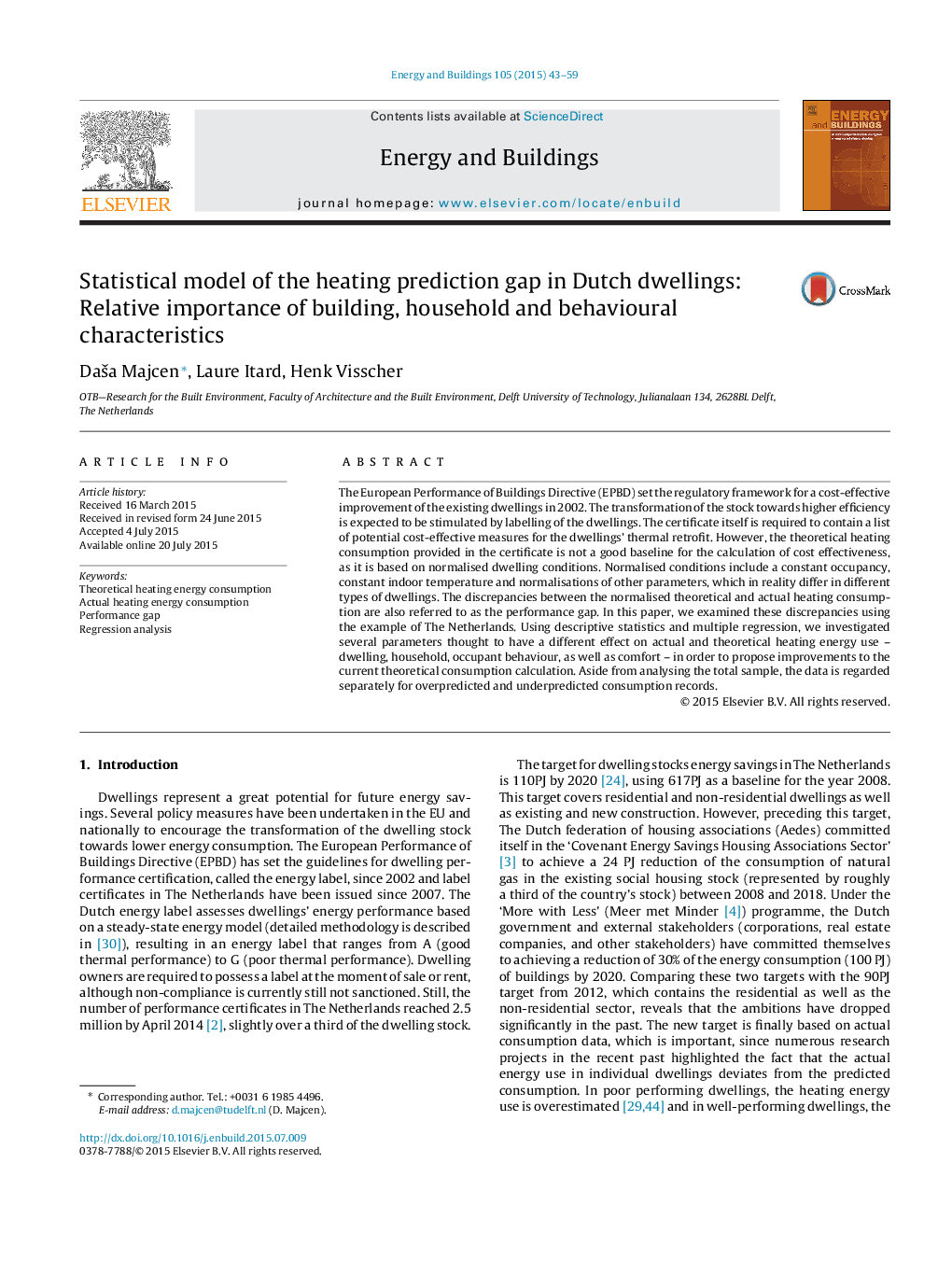| Article ID | Journal | Published Year | Pages | File Type |
|---|---|---|---|---|
| 262371 | Energy and Buildings | 2015 | 17 Pages |
•Dwellings’ actual heating consumption is explained by different variables than the theoretical.•Overprediction is explained by different factors than underprediction.•Models for energy performance calculation can be improved using actual energy data.
The European Performance of Buildings Directive (EPBD) set the regulatory framework for a cost-effective improvement of the existing dwellings in 2002. The transformation of the stock towards higher efficiency is expected to be stimulated by labelling of the dwellings. The certificate itself is required to contain a list of potential cost-effective measures for the dwellings’ thermal retrofit. However, the theoretical heating consumption provided in the certificate is not a good baseline for the calculation of cost effectiveness, as it is based on normalised dwelling conditions. Normalised conditions include a constant occupancy, constant indoor temperature and normalisations of other parameters, which in reality differ in different types of dwellings. The discrepancies between the normalised theoretical and actual heating consumption are also referred to as the performance gap. In this paper, we examined these discrepancies using the example of The Netherlands. Using descriptive statistics and multiple regression, we investigated several parameters thought to have a different effect on actual and theoretical heating energy use – dwelling, household, occupant behaviour, as well as comfort – in order to propose improvements to the current theoretical consumption calculation. Aside from analysing the total sample, the data is regarded separately for overpredicted and underpredicted consumption records.
